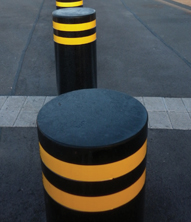After the Paris terror attacks of November 2015, some stadiums around the world decided to enhance security. But, a speaker at the recent UK Security Expo 2016 in London pointed out, you need to understand the dynamics that small changes, in terms of enhanced security screening, can create in a much larger crowd; such as, crushes at security gates.
He was Prof Keith Still of Manchester Metropolitan University, a long-time trainer and consultant on ‘crowd science’, whether at large sports events or pilgrimages to Saudi Arabia.
How far do you go with screening, when – as happened at the Euro 2016 football tournament – a fan smuggled a flare into a stadium up his bottom?! fans can become angry, when queueing at a venue, and the queue becomes a security risk, he pointed out. A site may have a long list of scenarios and responses; but in the event of an emergency, you cannot very well turn to the right page in a manual. You need information at your fingertips.
There’s only five things you can do with a crowd, he suggested: evacuate, direct crowd members, have a phased evacuation, stay put, or invacuate (if for example there’s an active shooter on the street). Which one do you choose in a scenario, and how to you communicate to the crowd? Keith Still also raised the danger of mixed messages. You might want people not to run, and put out a tannoy message to say so; but what of signage that shows a running figure?! And as for the official advice in case of an ‘active shooter’, run-hide-tell, Still pointed out that you are now telling people to run, and not walk in an orderly manner. As Keith Still said, a fire alarm does not give a crowd a direction to move in; that may require security staff with radios.
Since 9-11, the focus has been on preparing and preventing the unexpected, he went on; there has been less emphasis on crowd congestion. He showed an example from the Notting Hill Carnival in west London in the summer of 2005; that is, the first after the 7-7 terror attacks. A fire cracker went off and police went to the scene; but there was a significant risk to life from the crowd scattering away from the non-event.
Keith Still suggested the application of games theory, analytical tools to understand the relationship of variables, such as weather and how crowd density will develop, for instance around taxis or bars or toilets. So it’s best to deploy security staff in areas of high density.
He argued for reducing large plans to formats that control rooms can use, such as green-amber-red for low, moderate or high density parts of a site; with the aim of the control room operators paying attention to the high density areas. He raised the warning that a crowd management team might stand down at 10pm at the end of an event; yet the crowd is still vulnerable when dispersing to merchandise outlets and train stations, perhaps until 11pm. That is, venues might need to extend the perimeter of their security staffing.
Also on the theme of colour-coding to aid crowd risk management, Keith Still suggested one diagram that you can look at on your desk – such as the front of a stage at a concert being high risk as people may become dehydrated in hot weather or a crush – rather than a document of thousands of words.
Returning to the five options you can do with a crowd, Still said that he asks hotels and conference centres how they evacuate – what if there’s a suspicious package in the entrance, and the setting off of the fire alarm sends people towards the threat?! Technology, he said, needs to be supplemented with education. If there is a threat outside, whether a chemical spill or car bomb, the site needs to tell people why it’s important to stay where they are – and, as he admitted, so many elements competing for managers’ attention in the emergency.
Visit http://gkstill.com/. Keith Still is the author of ‘Introduction to Crowd Science’, published in 2014 by CRC Press and featured in the October 2014 print issue of Professional Security magazine.
Pictured by Mark Rowe; bollards outside Wembley Stadium.









